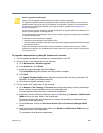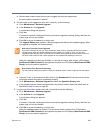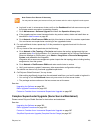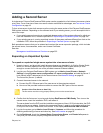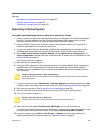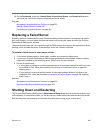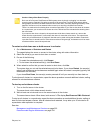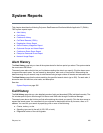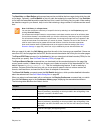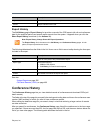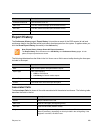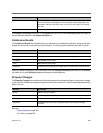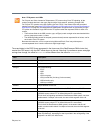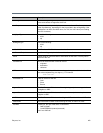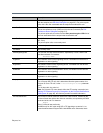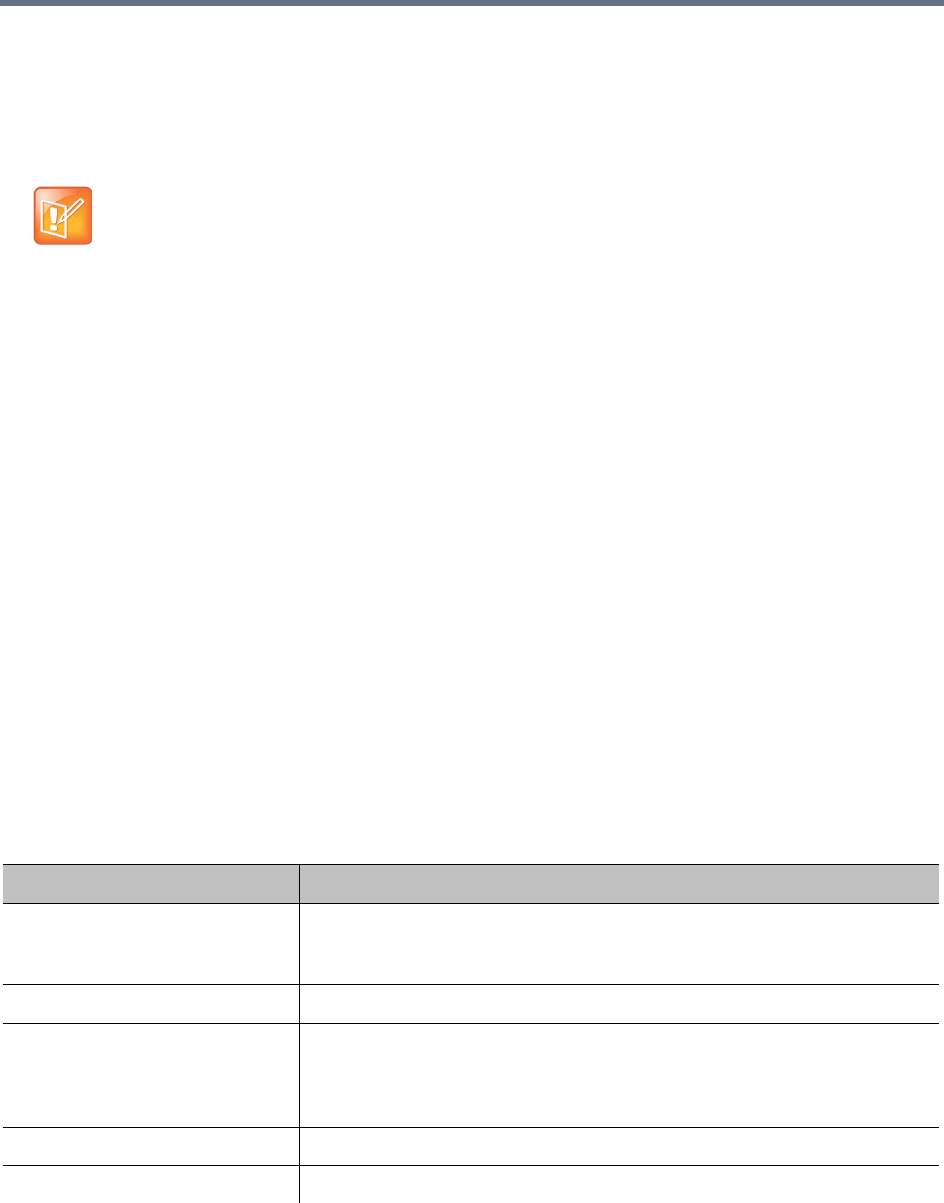
Polycom, Inc. 396
The Start After and Start Before settings are always active and define the time range during which the calls
to find begin. Optionally, use End Before to find only calls that ended by the specified time. Use End After
to find calls that extended beyond the specified time; this is useful for finding very long calls. When setting
the date/time range for your search, keep in mind that retrieving a large number of records can take some
time.
After you search for calls, the Call History page lists the calls in the time range you specified. If there are
more than 500, the first page lists the first 500, and the arrow buttons below the list let you view other pages.
The Export CDR Data command (in the Actions list) lets you download call detail records (CDRs) for the
time period you specify. See Call Detail Records (CDRs) on page 400.
The Export Search Results command lets you download just the records displayed on the page (the
current search results). A Save dialog box prompts you to select a location for the downloaded file. The
default filename is CDRSearchExport.tar. This is a troubleshooting feature. To aid in resolving a
problem, Polycom Global Services may ask you to use specific search criteria to retrieve certain call
records, download them, and send the file to them for analysis of the records.
The Show Call Details command opens the Call Details dialog box, which provides detailed information
about the selected call. See Call Details Dialog Box on page 88
When you select a call associated with a conference, the Display Conference command lets you switch
from the Call History page to the Conference History page, displaying the associated conference.
The following table describes the fields in the list.
Note: Call History in a Supercluster
You can also access the call history of a specific device by selecting it on the Endpoints page and
clicking View Call History.
If a call traversed multiple clusters in a supercluster, each cluster contains some of its call history data.
If one of those clusters is unavailable when you view the call’s history, that history may be incomplete.
If a call traversed multiple clusters in a supercluster, it’s counted as a single call, but it appears in the
results of each cluster it touched when you search by cluster. Therefore, the sum of the number of
calls for each cluster may be greater than the total number of calls for the entire supercluster.
How much historical data is available depends on the system’s retention settings (see History
Retention Settings on page 276), which can only be modified by a user with the Auditor role.
Column Description
Originator The originating device’s display name, name, alias, or IP address (in that
order of preference), depending on what it provided in the call signaling. If the
originator is an MCU, the MCU name.
Dial String Dial string sent by originator, when available.
Destination The destination device’s display name, name, alias, or IP address (in that
order of preference), depending on what it provided in the call signaling. If the
destination is an MCU, the MCU name; if a VSC, the VSC value (not including
the VSC).
Start Time Time the call began (first signaling event).
End Time Time the call ended (session closed).



